Initial Design 1: Bill's Scenario
The work flow for Bill can be modeled with the following diagram.
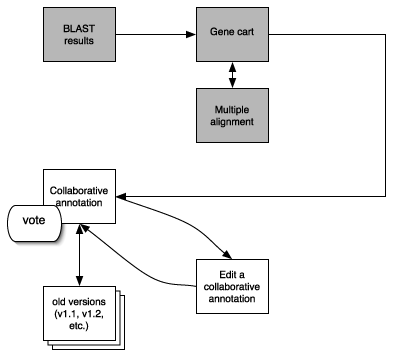
Bill starts by running a BLAST query, which gives him a list of genes that he can add to his gene cart via the existing IMG system. The cart gives a list of genes that the user has gathered for further analysis. In the new version of the system, an annotation column has been added. This allows researchers to quickly work back and forth between annotations for several genes of interest. Bill is not yet logged in, so he sees the second version below.
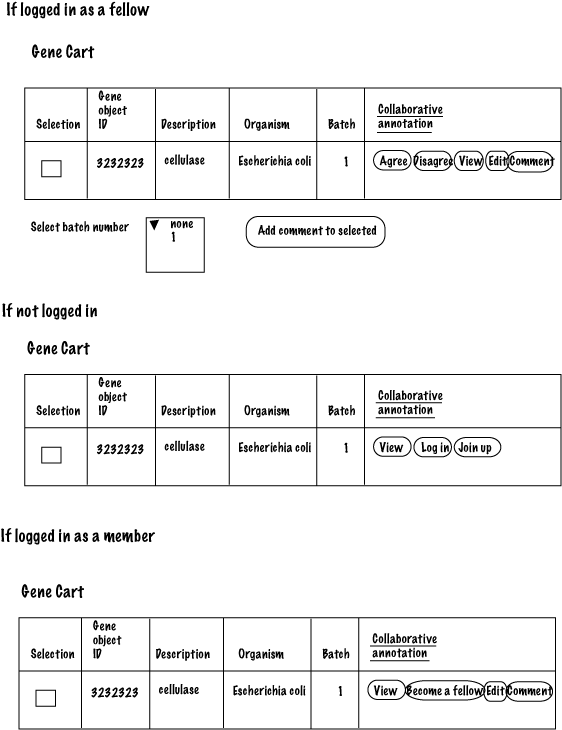
Bill uses the View button to pull up the Collaborative Annotation page for each gene in his cart. The pages look something like this.
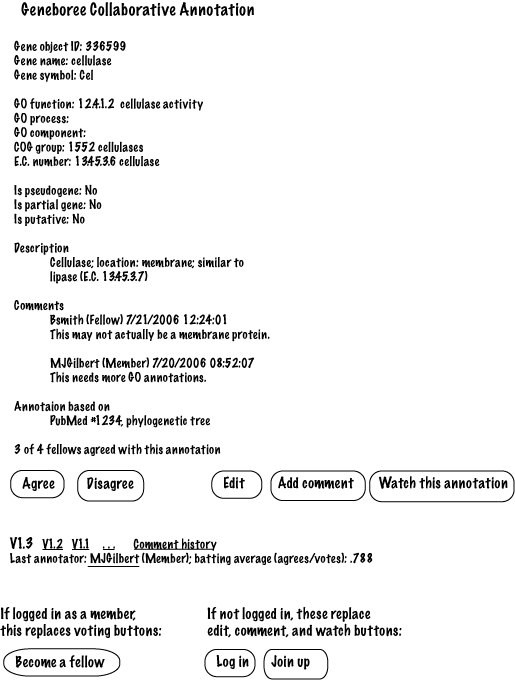
While viewing the annotations, he looks through the history of annotation as well, using the V1.2, V1.1 buttons, etc. These pull up similar pages that are simply earlier versions of the annotation. Bill next runs a multiple alignment, another operation that can be done from the current IMG system via the gene cart. He is still not logged in, so the Log in button appears at the bottom of the page when he decides to annotate one. The login page looks like this:
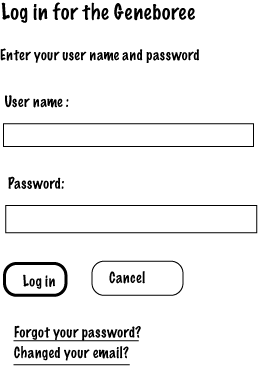
After logging in, he is returned to the page he was viewing before logging in. Now he has the Edit button available. Clicking that opens this page:
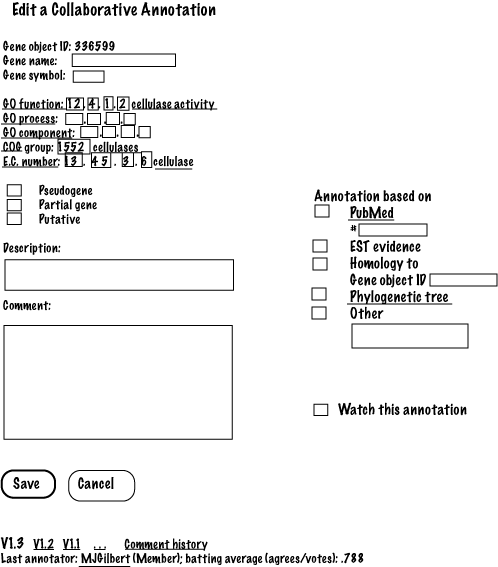
As Bill fills in the GO, COG, and E.C. information, the corresponding terms are filled in to the right of his entries. The labels of these fields are also links to the ontology web sites, where Bill can browse terms. The terms are links to the points in the ontology sites where those terms appear. There is also a link to the PubMed site and one to a site that builds phylogenetic trees. When Bill finishes editing his annotation, he returns to the regular annotation page, which now shows him his own annotation as the latest.
Bill returns to the gene cart, where he also has buttons for voting on annotations. He clicks on "Agree" for two of them.